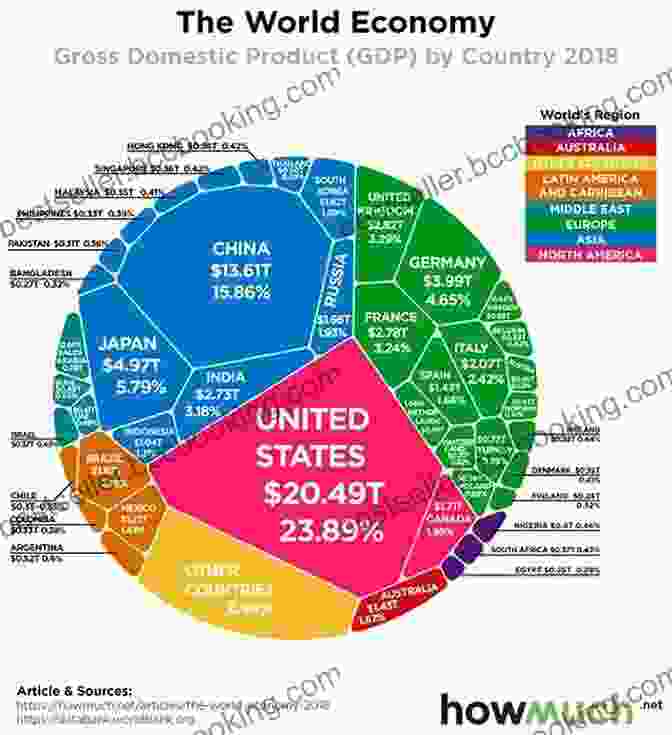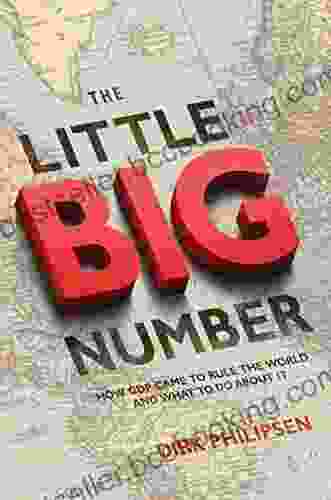In the tapestry of economic indicators, GDP stands tall as a formidable force, shaping our perception of nations and guiding policy decisions around the globe. But beneath its seemingly straightforward facade lies a complex history and a multifaceted impact on our societies. In "How GDP Came to Rule the World and What to Do About It," renowned economist Robert J. Gordon and journalist Muhammad A. Khan unveil the intricate story of GDP, scrutinizing its strengths and limitations while offering a thought-provoking roadmap for the future.

4.2 out of 5
| Language | : | English |
| File size | : | 10392 KB |
| Text-to-Speech | : | Enabled |
| Screen Reader | : | Supported |
| Enhanced typesetting | : | Enabled |
| Word Wise | : | Enabled |
| Print length | : | 403 pages |
The Genesis of GDP
The origins of GDP can be traced back to the Great Depression, an era marked by economic turmoil and a pressing need for reliable data. In 1934, economist Simon Kuznets devised a comprehensive system to measure national output, laying the foundation for what we now know as GDP. Initially intended as a tool for short-term economic analysis, GDP gradually evolved into a measure of long-term economic growth and development.
GDP's Reign as a Global Metric
In the post-World War II era, GDP gained widespread acceptance as the primary indicator of economic progress. Its simplicity and universality made it a convenient metric for comparing different countries and tracking economic trends over time. However, as Gordon and Khan point out, this universal adoption also paved the way for misinterpretations and misunderstandings about the true nature of GDP.
GDP's Shortcomings
While GDP remains a valuable tool for economic analysis, it has its limitations. The authors highlight several key shortcomings:
* Measurement Challenges: GDP relies heavily on market-based data, which can be volatile and subject to measurement errors. This can lead to distortions in GDP calculations and make accurate comparisons between countries difficult. * Focus on Production: GDP measures the quantity of goods and services produced within a country's bFree Downloads, but it fails to capture non-market activities such as household work or environmental externalities. * Ignores Distribution: GDP provides no information about how wealth is distributed within a country. As a result, it can create a false sense of progress when economic growth benefits only a small portion of the population. * Environmental Impact: GDP takes no account of the environmental impact of economic activities, potentially leading to unsustainable practices that damage natural resources and human health.
Rethinking GDP
Recognizing the limitations of GDP, Gordon and Khan advocate for a more nuanced approach to economic measurement. They propose a framework that complements GDP with other indicators, such as:
* Social Progress Index: Measures well-being based on factors such as health, education, and equality. * Genuine Progress Indicator: Adjusts GDP for environmental degradation and social inequality. * Human Development Index: Assesses progress based on factors such as life expectancy, education, and standard of living.
In "How GDP Came to Rule the World and What to Do About It," Robert J. Gordon and Muhammad A. Khan provide a comprehensive analysis of the history, significance, and limitations of GDP. They argue that while GDP remains a useful tool, it should not be the sole measure of economic progress and well-being. By embracing a broader framework that incorporates social, environmental, and human development indicators, we can create a more accurate and inclusive picture of our economies and guide policy decisions that truly enhance the quality of life for all.


























































































